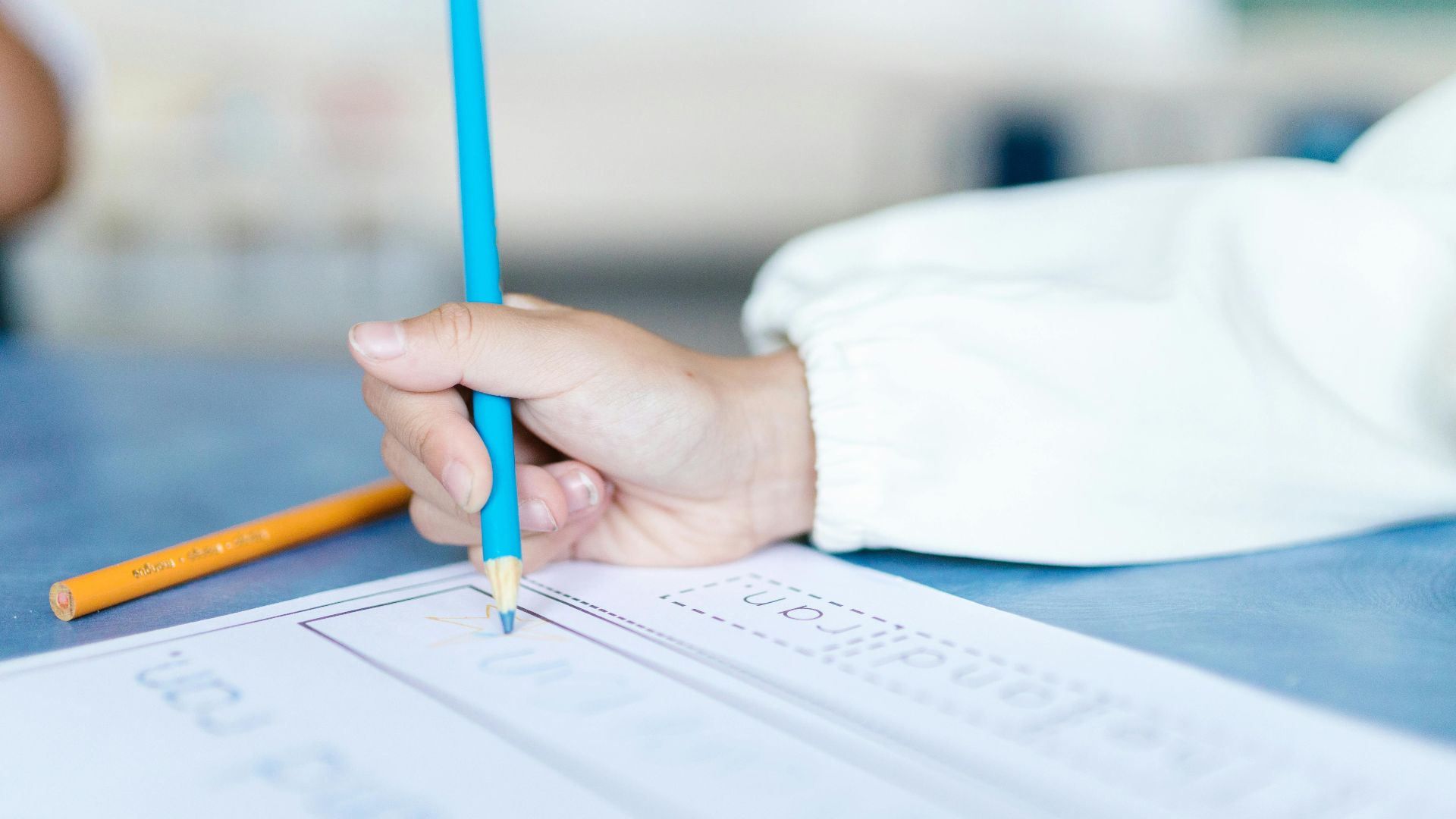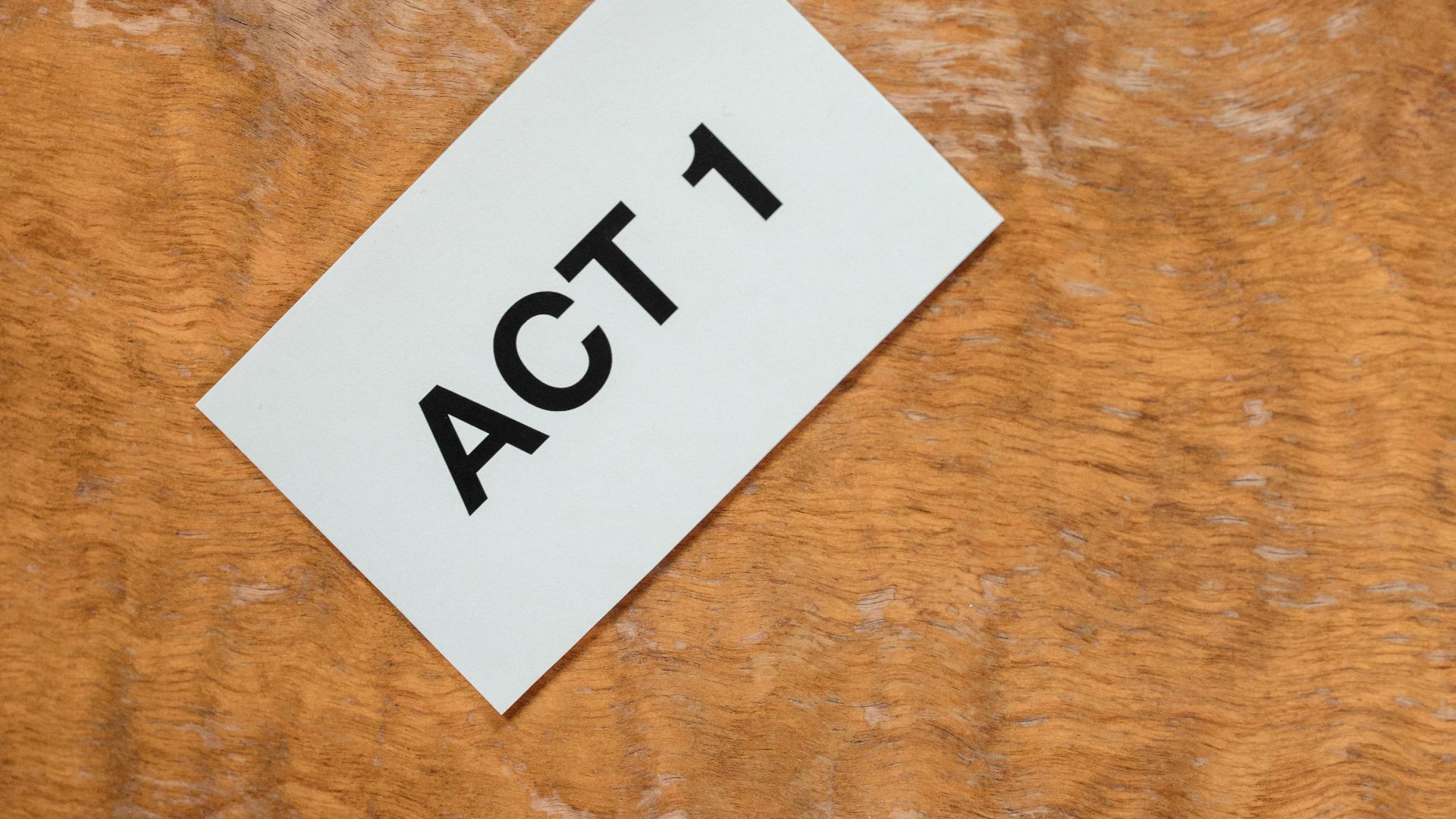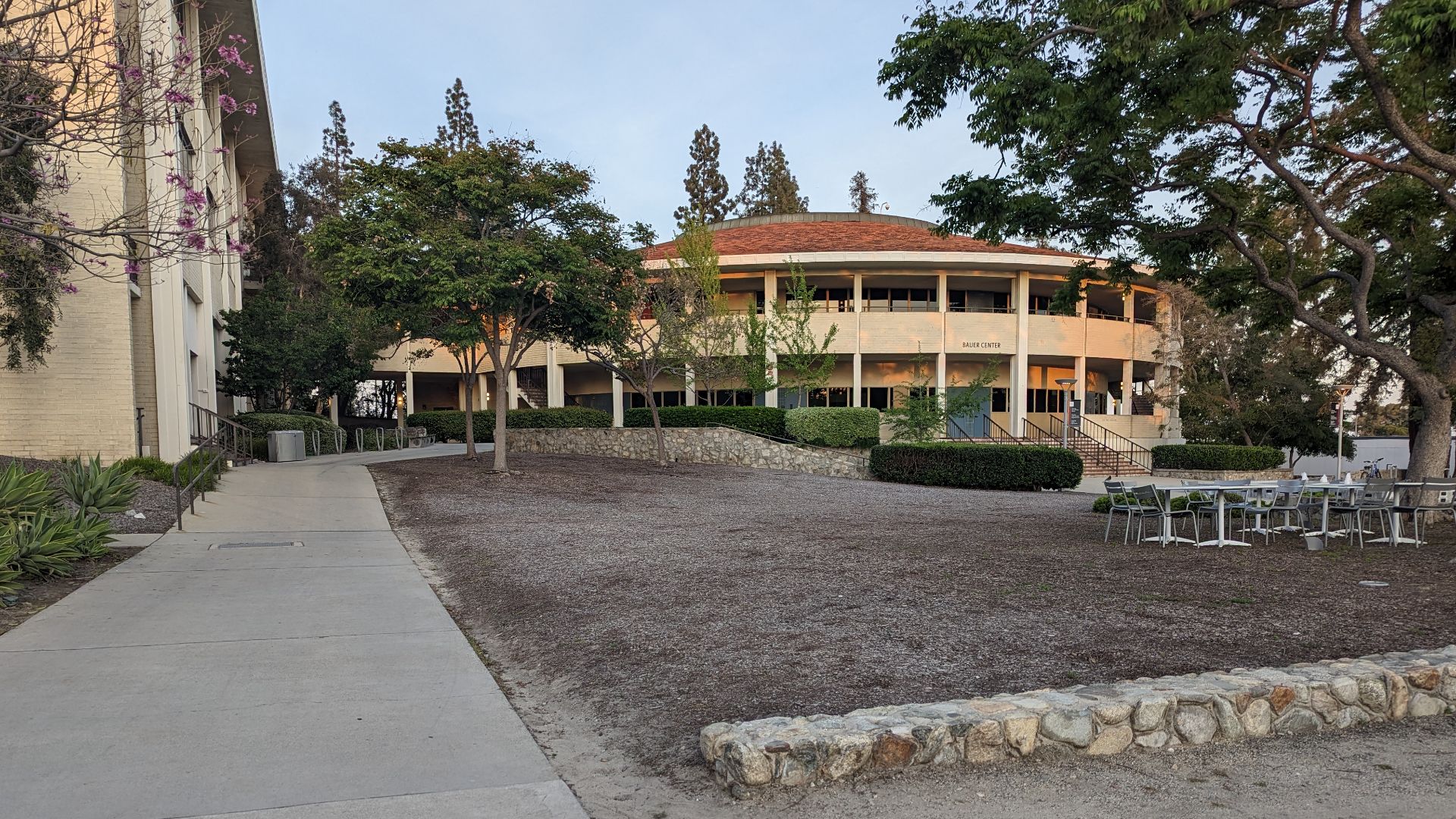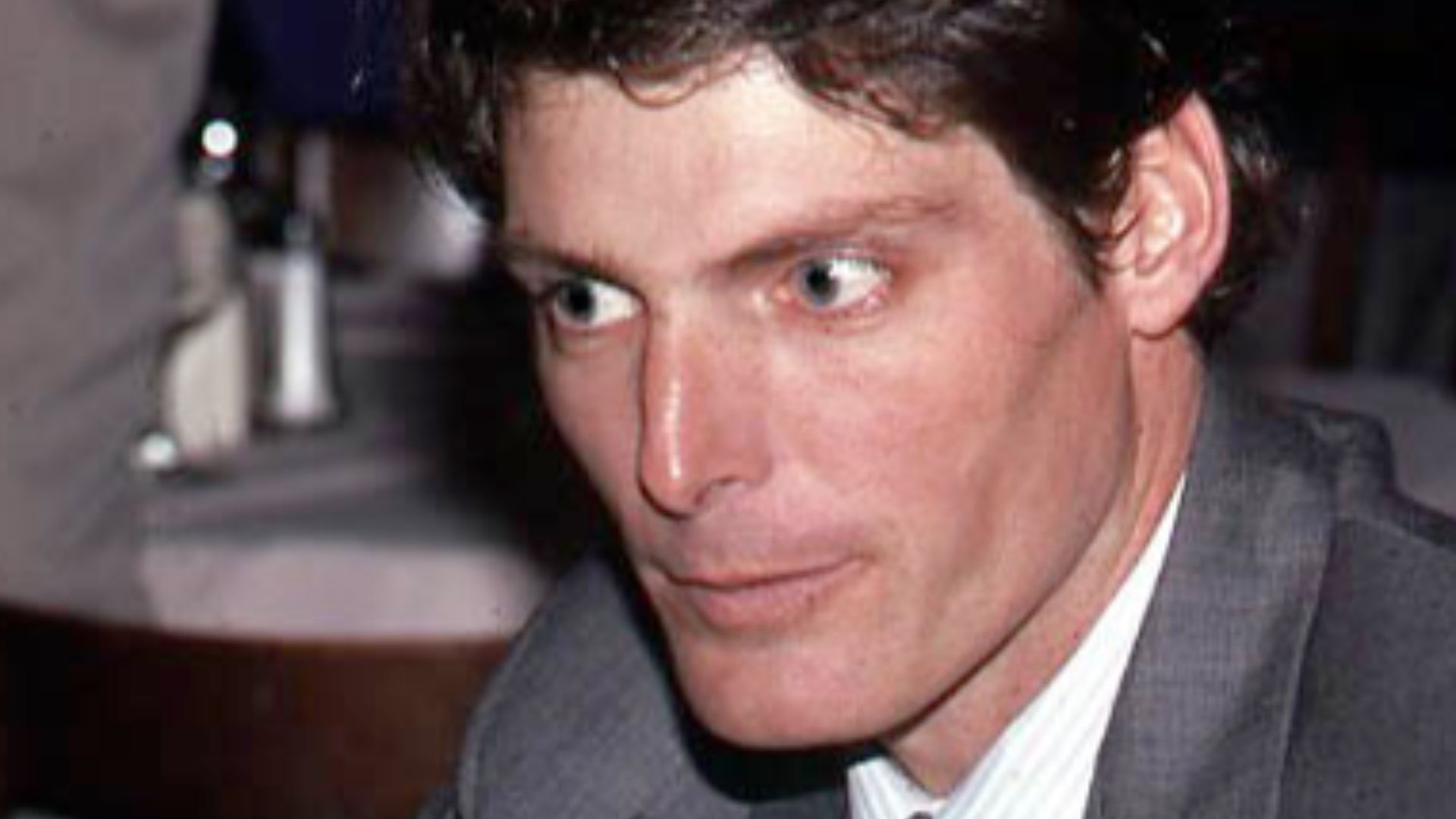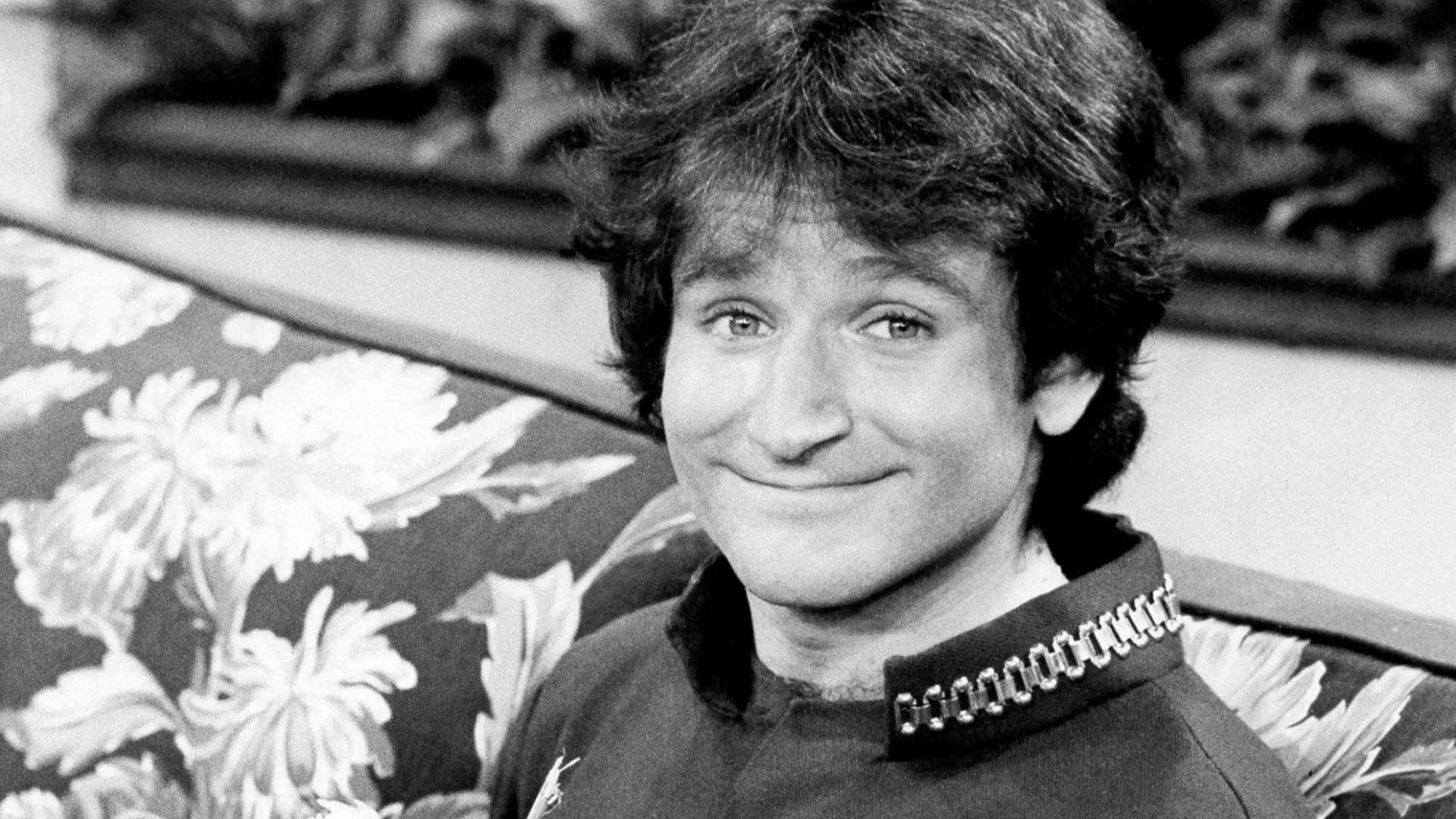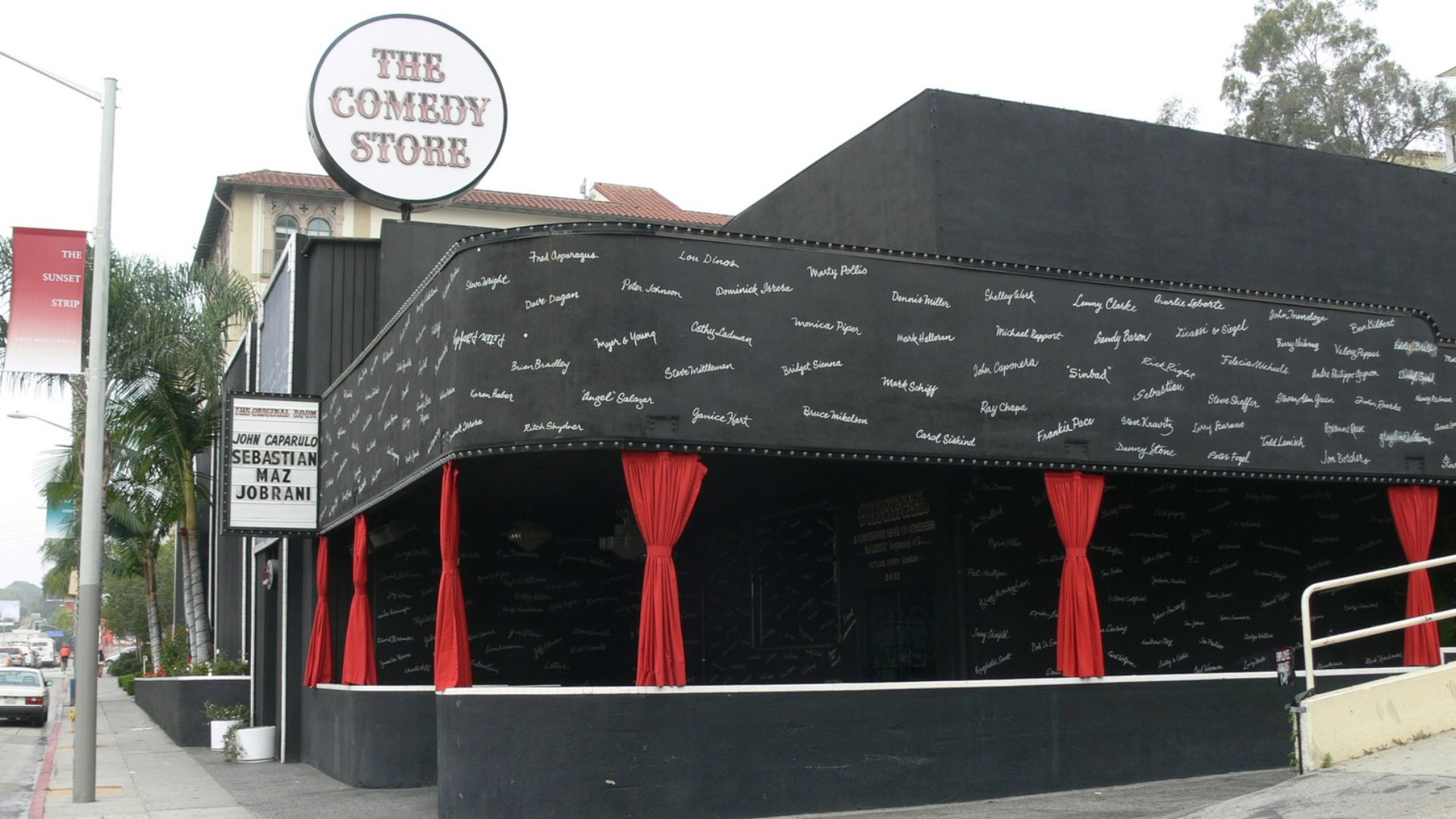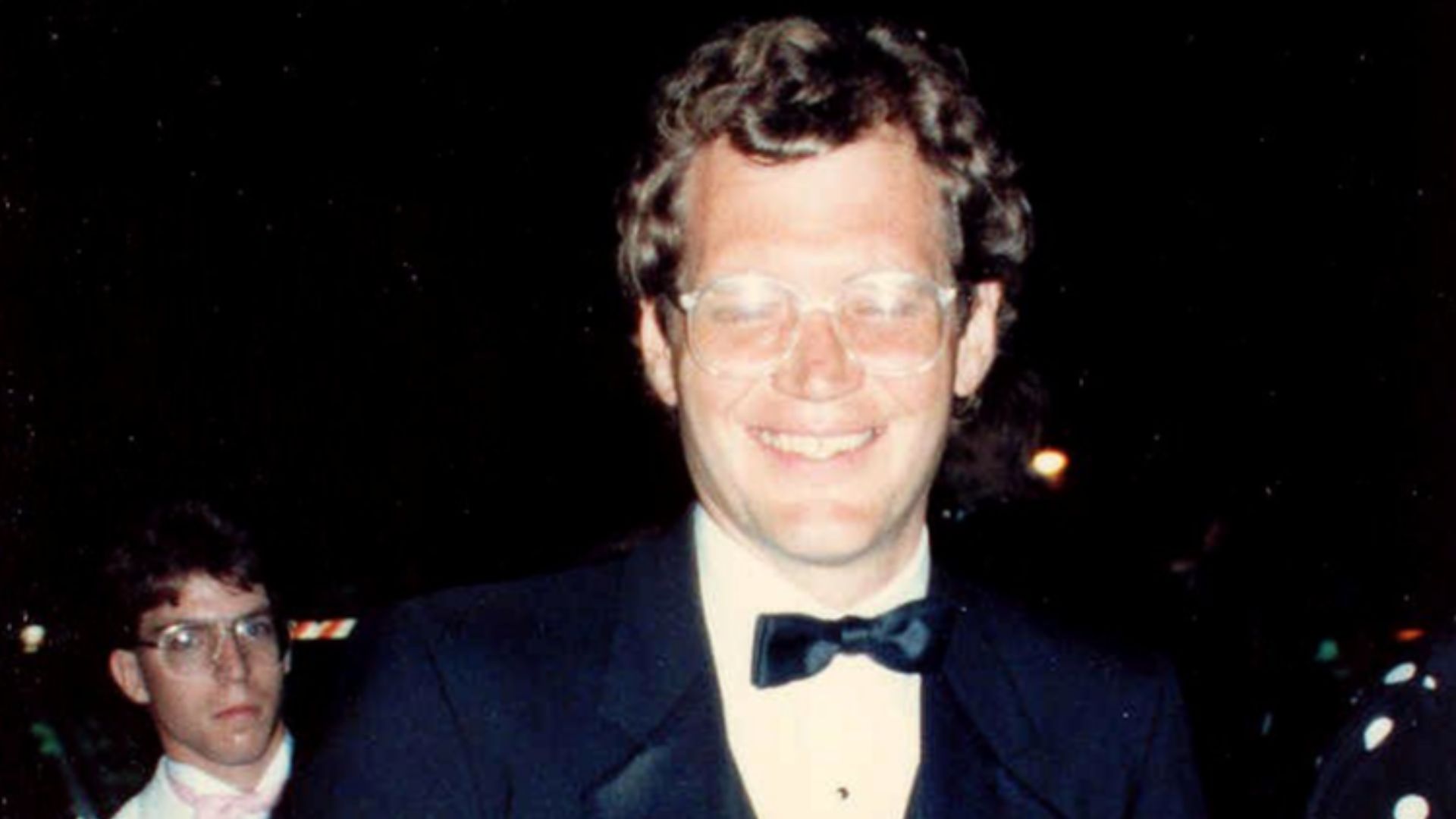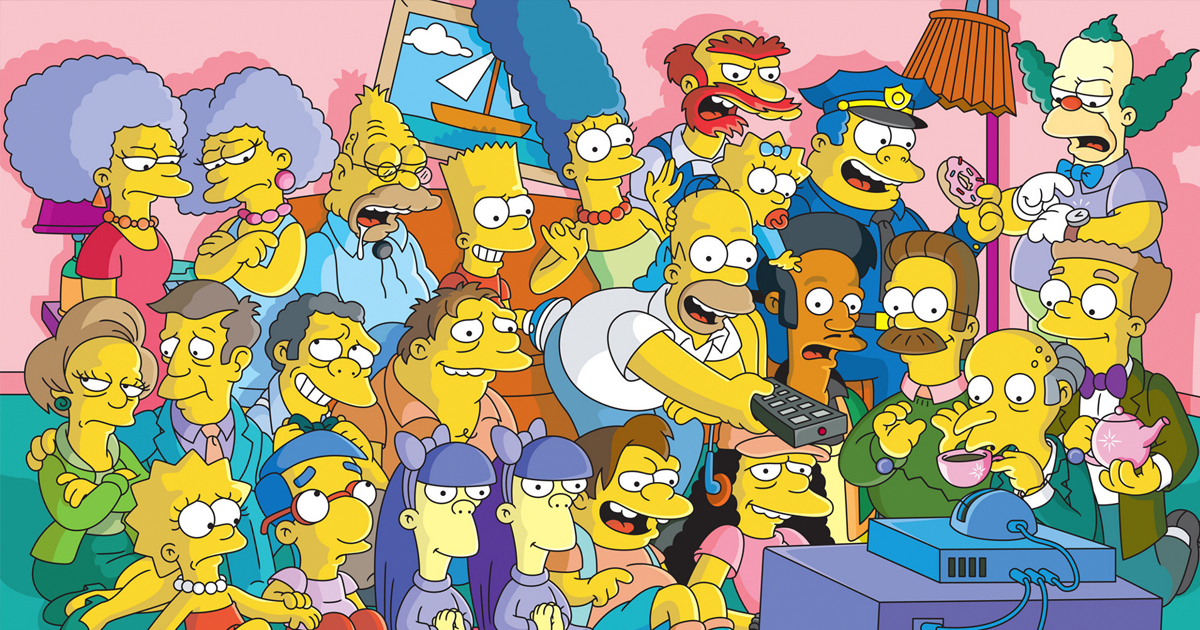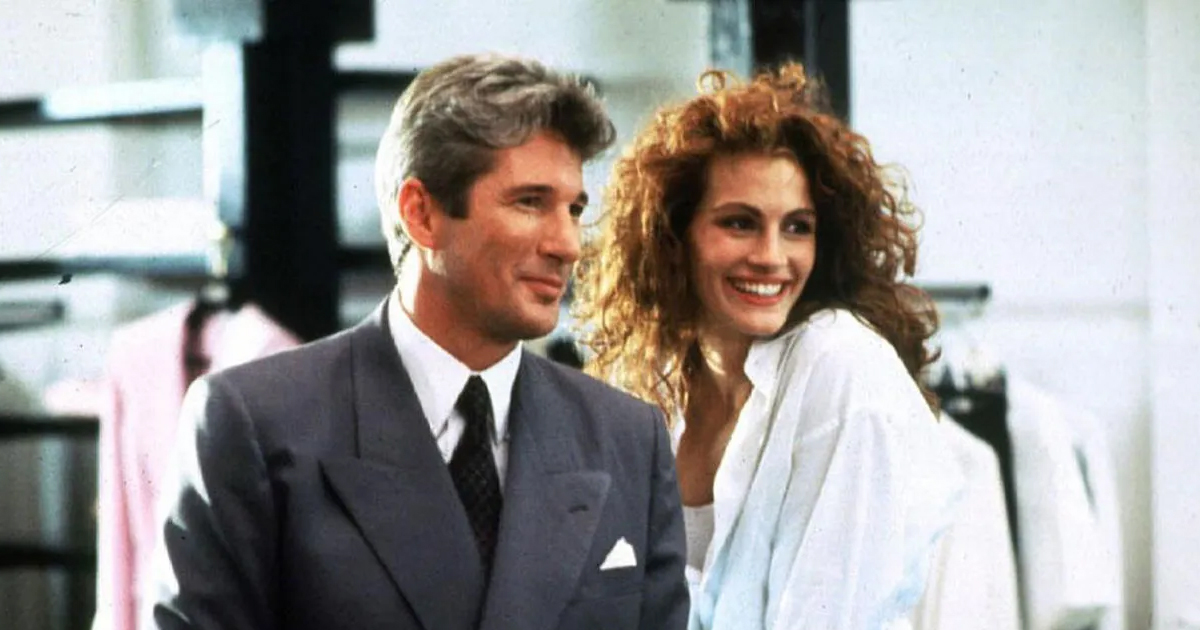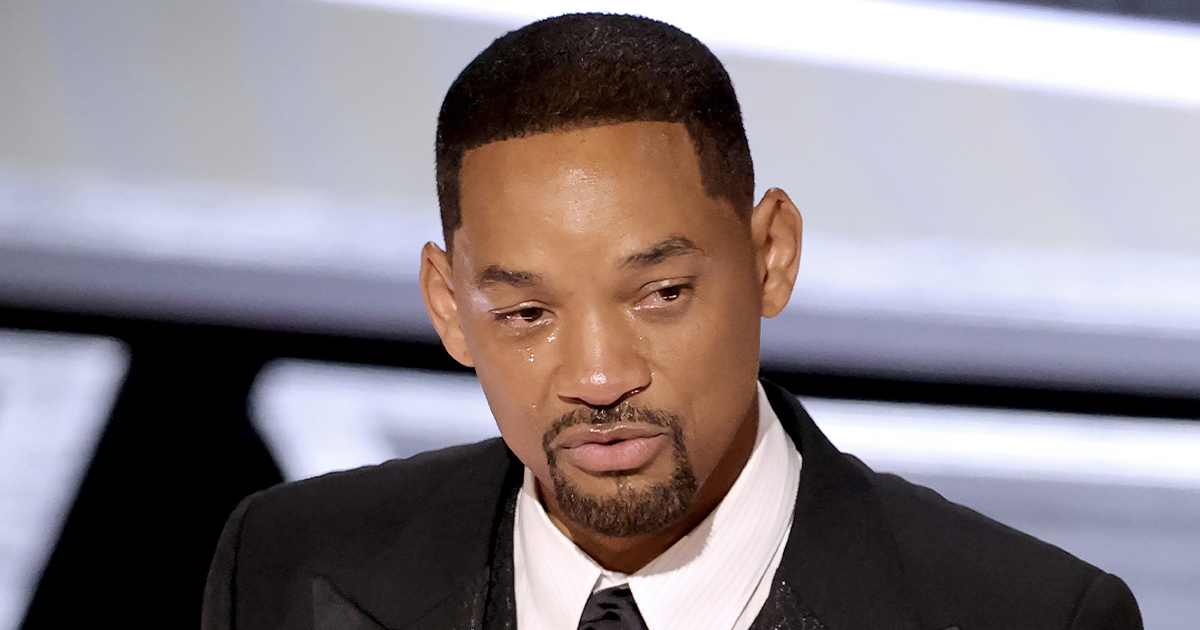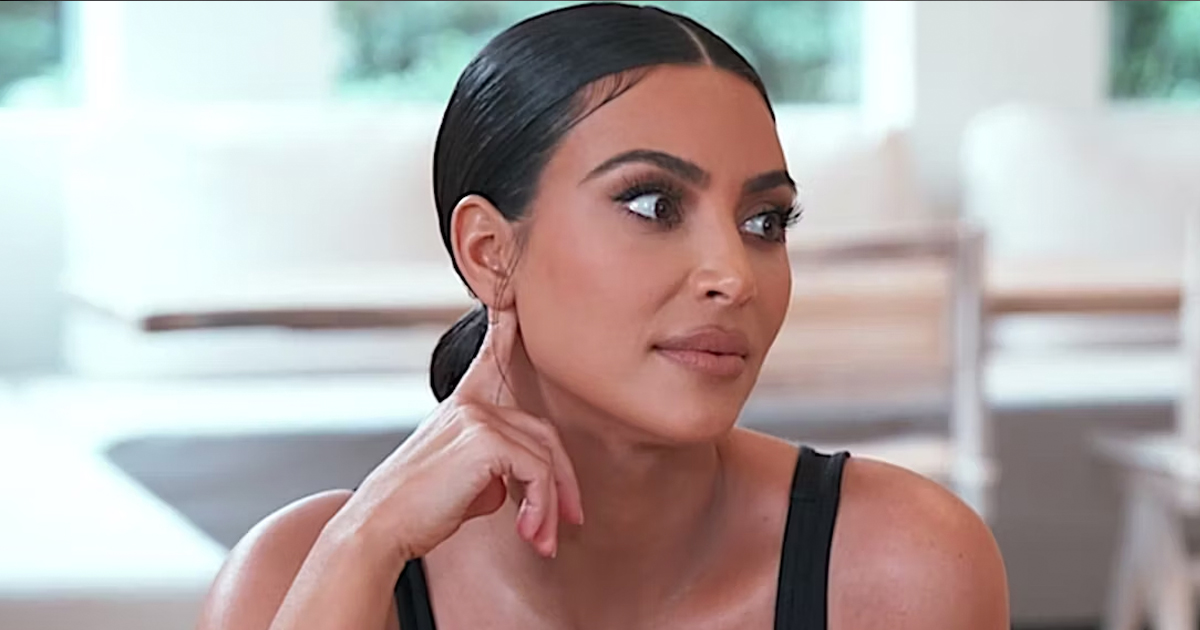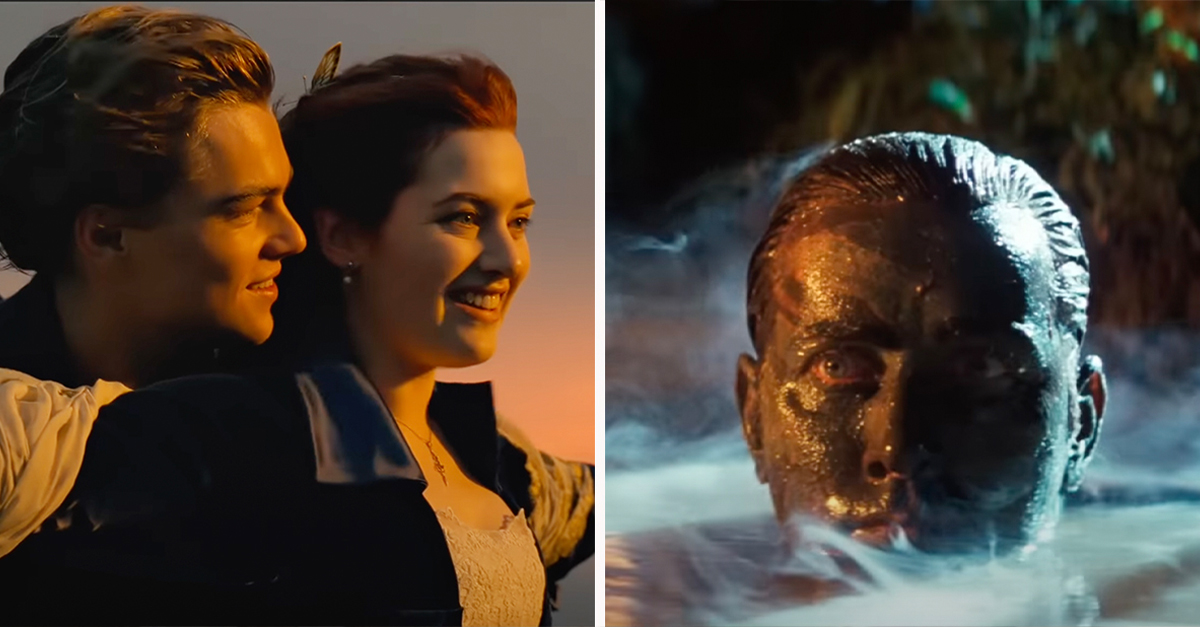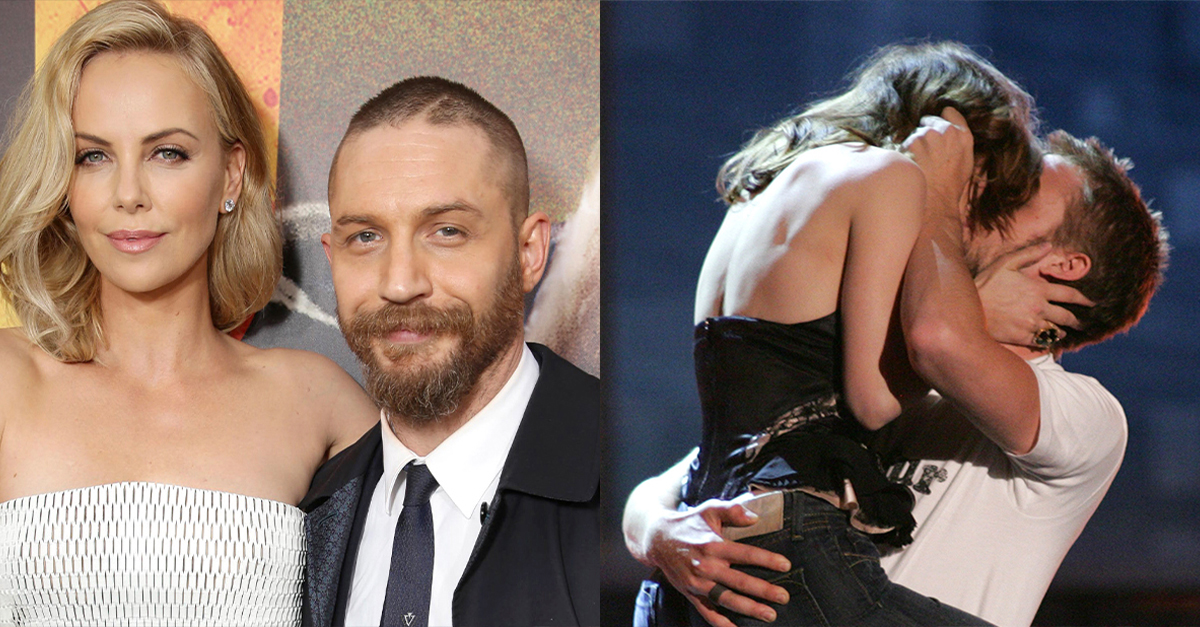More Than Comedy
Some people are born to make others smile. Robin Williams happened to be one of those rare souls. Apart from fame and success, his story is about finding light in the darkness.
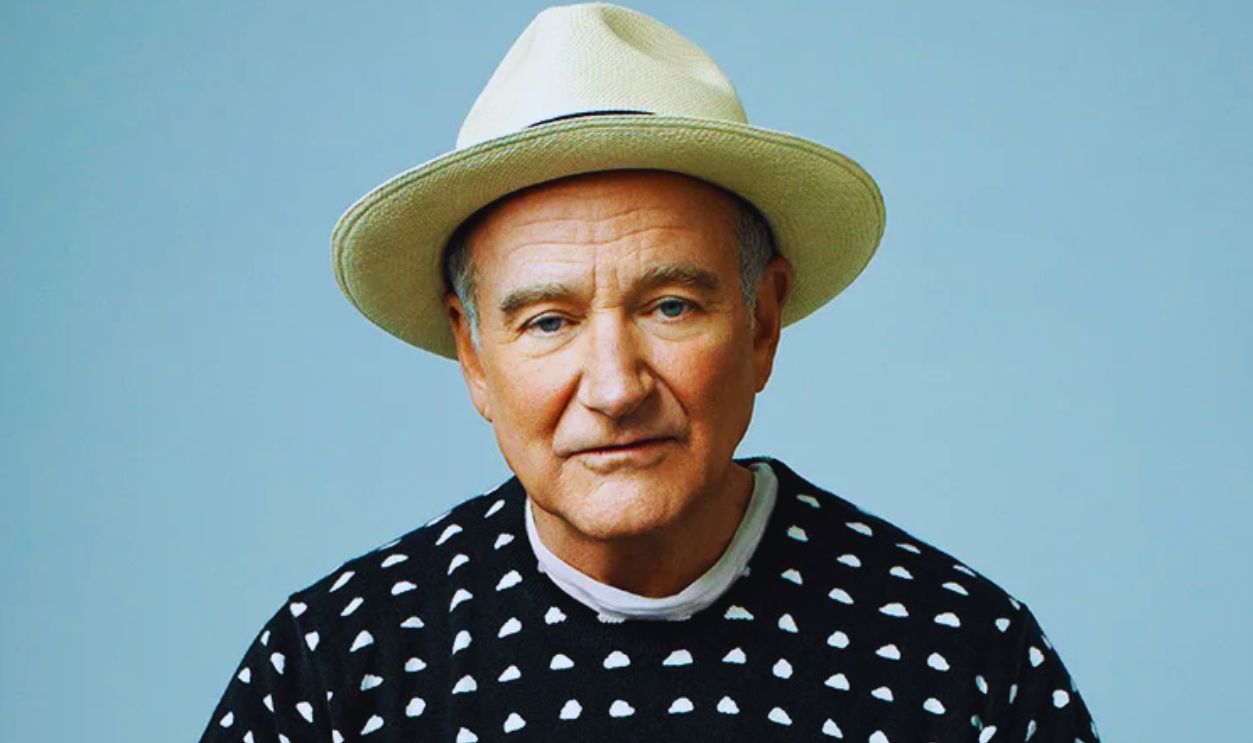
Chicago Birth
On July 21, 1951, Robin McLaurin Williams entered the world at St Luke's Hospital in Chicago. His father, Robert, worked as a Ford executive while his mother, Laurie, was a former Mississippi model. This privileged beginning would later fuel his deep empathy for struggling people.
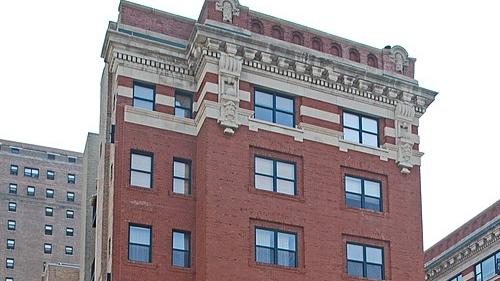 Andrew Jameson, Wikimedia Commons
Andrew Jameson, Wikimedia Commons
Early Childhood
Both parents worked demanding jobs, leaving young Williams primarily in the care of the family maid. The quiet, shy boy desperately craved his mother's attention, discovering that making her laugh was his ticket to connection. Humor became his survival tool from the very start.
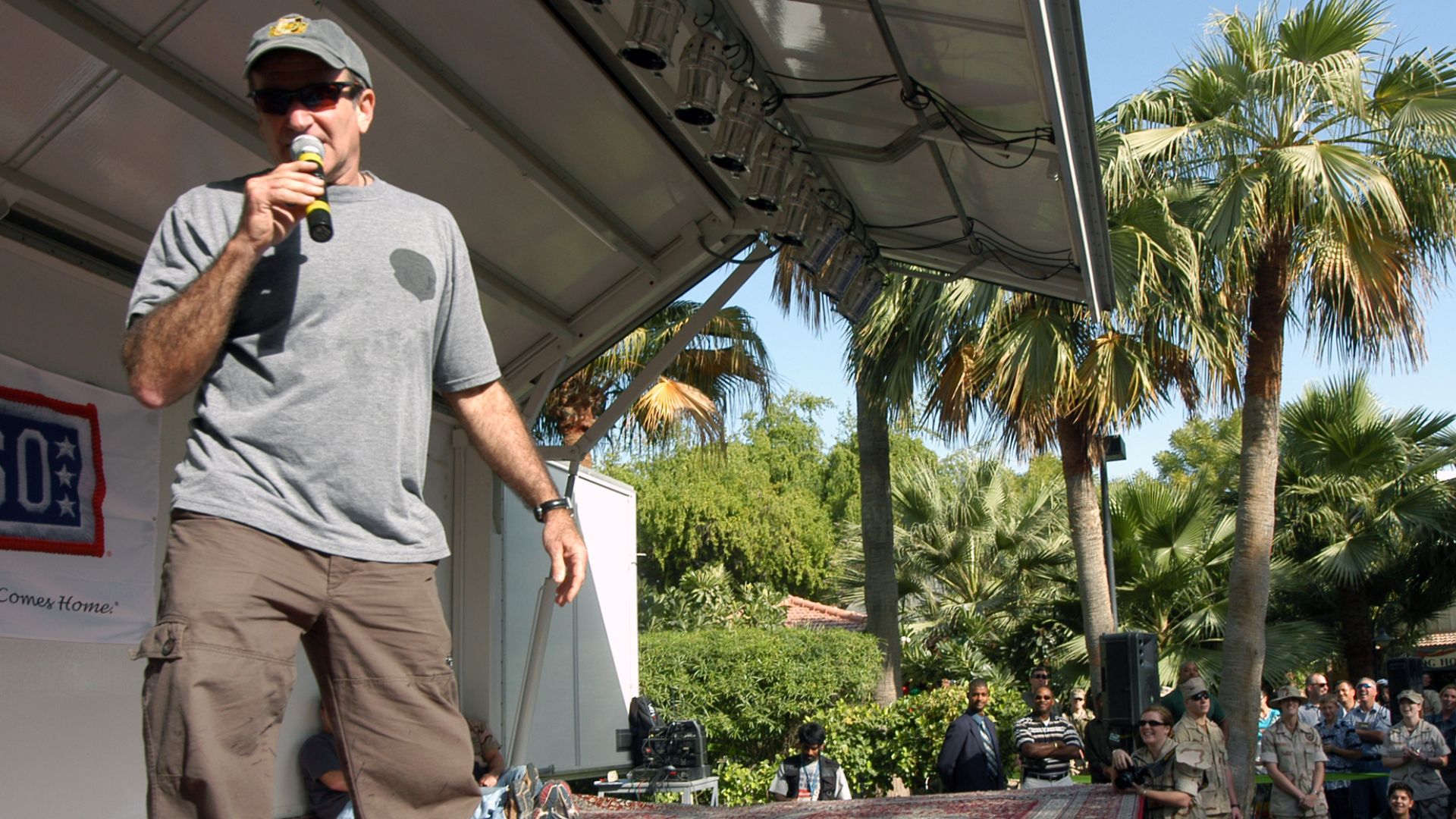 U.S. Navy photo by Journalist 1st Class Dennis J. Herring. (RELEASED), Wikimedia Commons
U.S. Navy photo by Journalist 1st Class Dennis J. Herring. (RELEASED), Wikimedia Commons
Detroit Move
When the kid turned twelve in late 1963, his father's career prompted a family relocation to Detroit. Their new home was a sprawling 40-room farmhouse on twenty acres in Bloomfield Hills. The mansion's isolation ended up deepening his reliance on imagination and creative play.
 ajay_suresh, Wikimedia Commons
ajay_suresh, Wikimedia Commons
School Struggles
Detroit Country Day School showcased Robin's academic brilliance and leadership skills as class president. However, several bullies mercilessly targeted him for his weight issues. Due to this, home became his refuge, where he developed coping mechanisms through solitary play and creative storytelling to escape the social pressures.
Drama Discovery
The wrestling team initially captured his profound interest, but theater changed everything. Drama class turned the timid boy into a confident performer. Here he learned to channel his natural wit and impressions into structured performances that earned genuine applause from peers.
California Move
At sixteen, Williams' world shifted again when his father retired early and moved the family to Tiburon, California. The Bay Area's relaxed atmosphere contrasted sharply with Michigan's conservative culture. It exposed him to progressive thinking and communities that mirrored unconventional creativity and free expression.
High School
Redwood High School in Larkspur focused on a "Gestalt" educational philosophy that perfectly suited Robin's creative spirit. The drama club became his sanctuary where artistic dreams flourished. His classmates' yearbook votes captured his duality by saying “Funniest” yet “Most Likely Not to Succeed”.
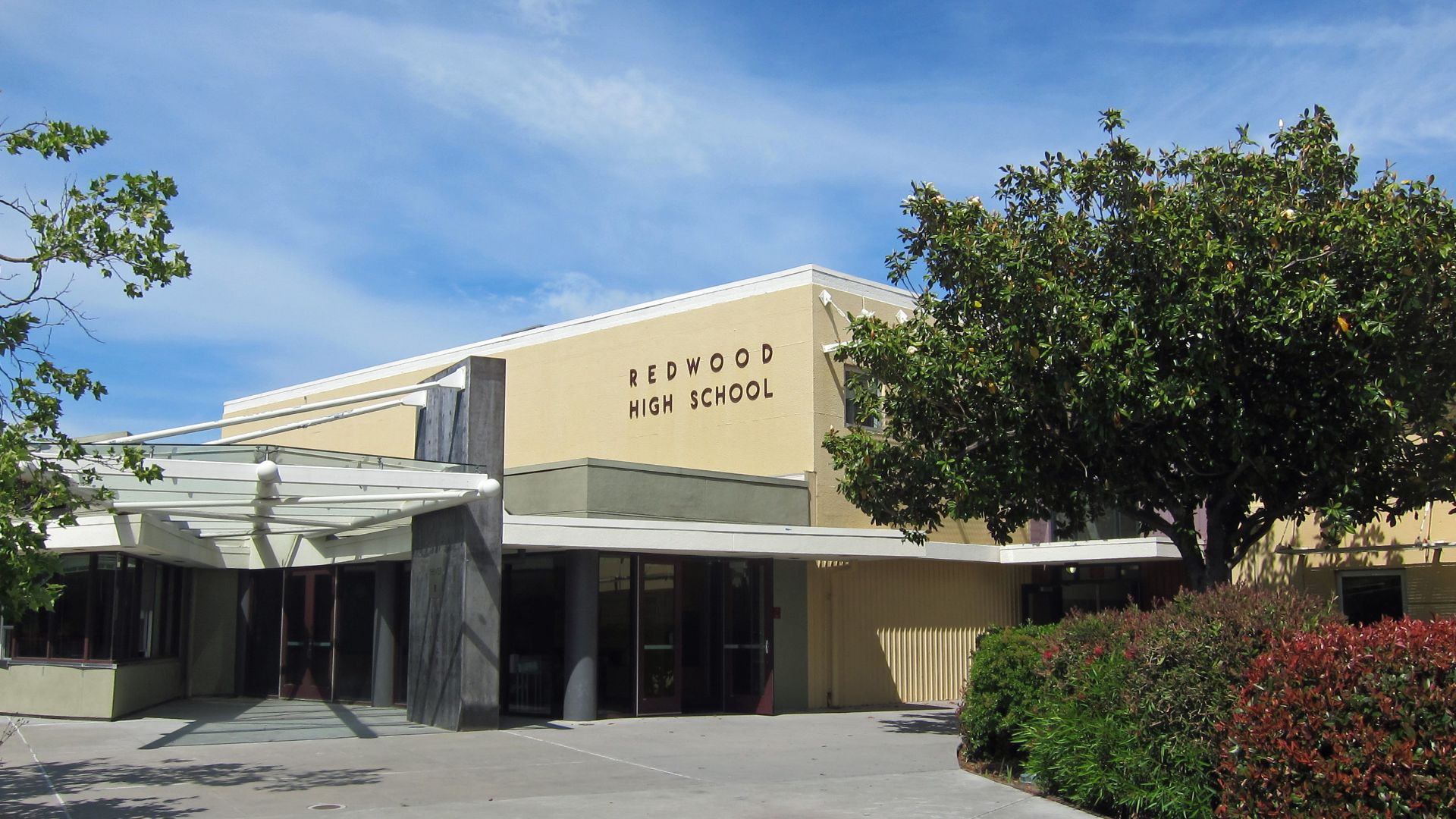 ResearcherQ, Wikimedia Commons
ResearcherQ, Wikimedia Commons
College Attempt
Political science at Claremont Men's College couldn't hold his attention for long. Traditional academics felt restrictive for Williams’ artistic spirit. The coursework seemed irrelevant compared to his burning desire to perform, leading him to make the risky decision to abandon his degree and pursue acting full-time.
Theater Studies
Thanks to three transformative years at the College of Marin's drama program, Robin's raw talent turned into something extraordinary. His casting as Fagin in Oliver! became a revelation, with improvisational skills that left fellow actors in stitches and professors predicting inevitable stardom ahead.
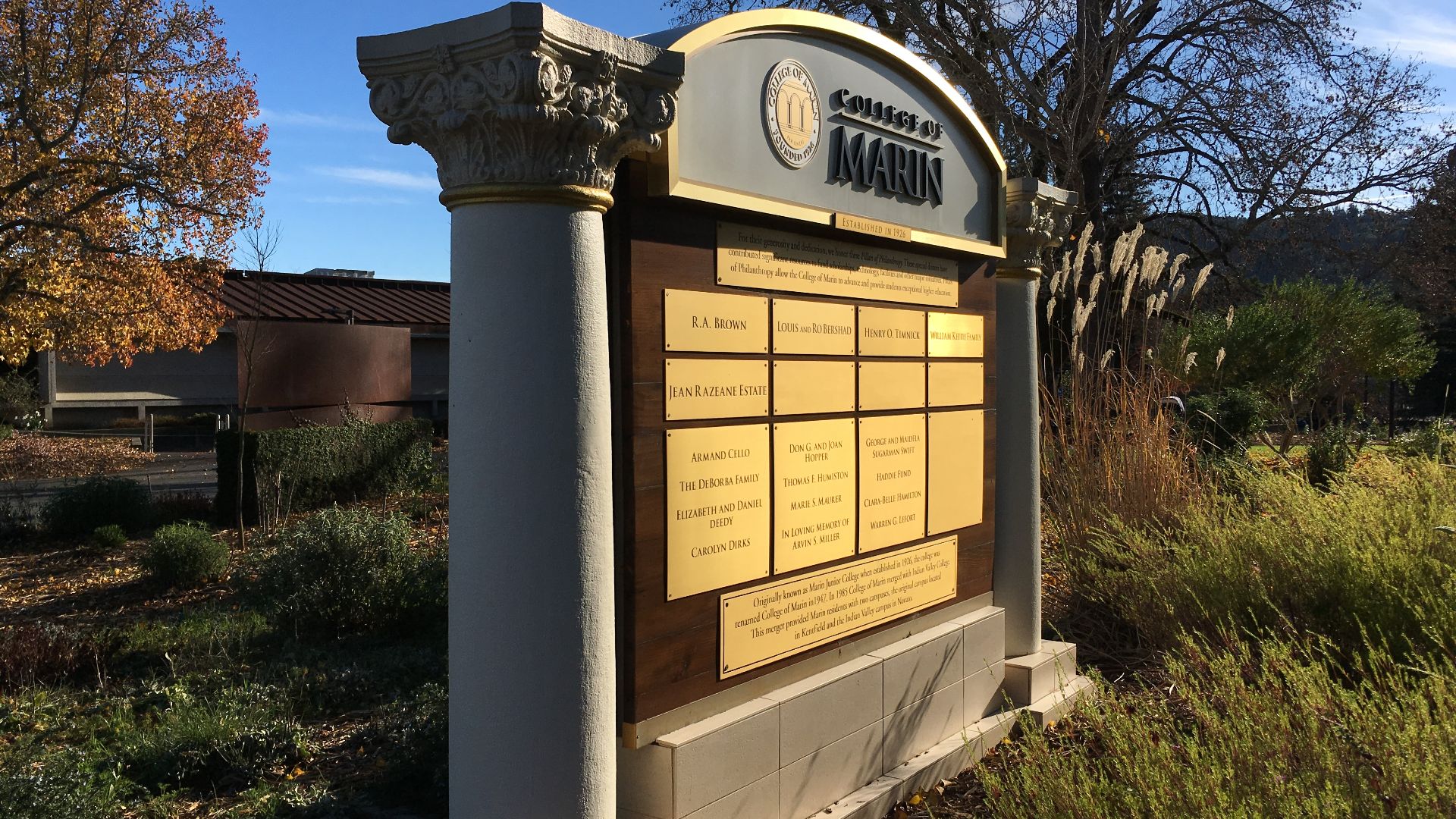 Plasticboob, Wikimedia Commons
Plasticboob, Wikimedia Commons
Juilliard School
Soon, a full scholarship to prestigious Juilliard in 1973 validated the youngster’s artistic potential among America's elite performers. Only around twenty freshmen were accepted, and he joined Christopher Reeve as the sole student chosen for John Houseman's exclusive Advanced Program training.
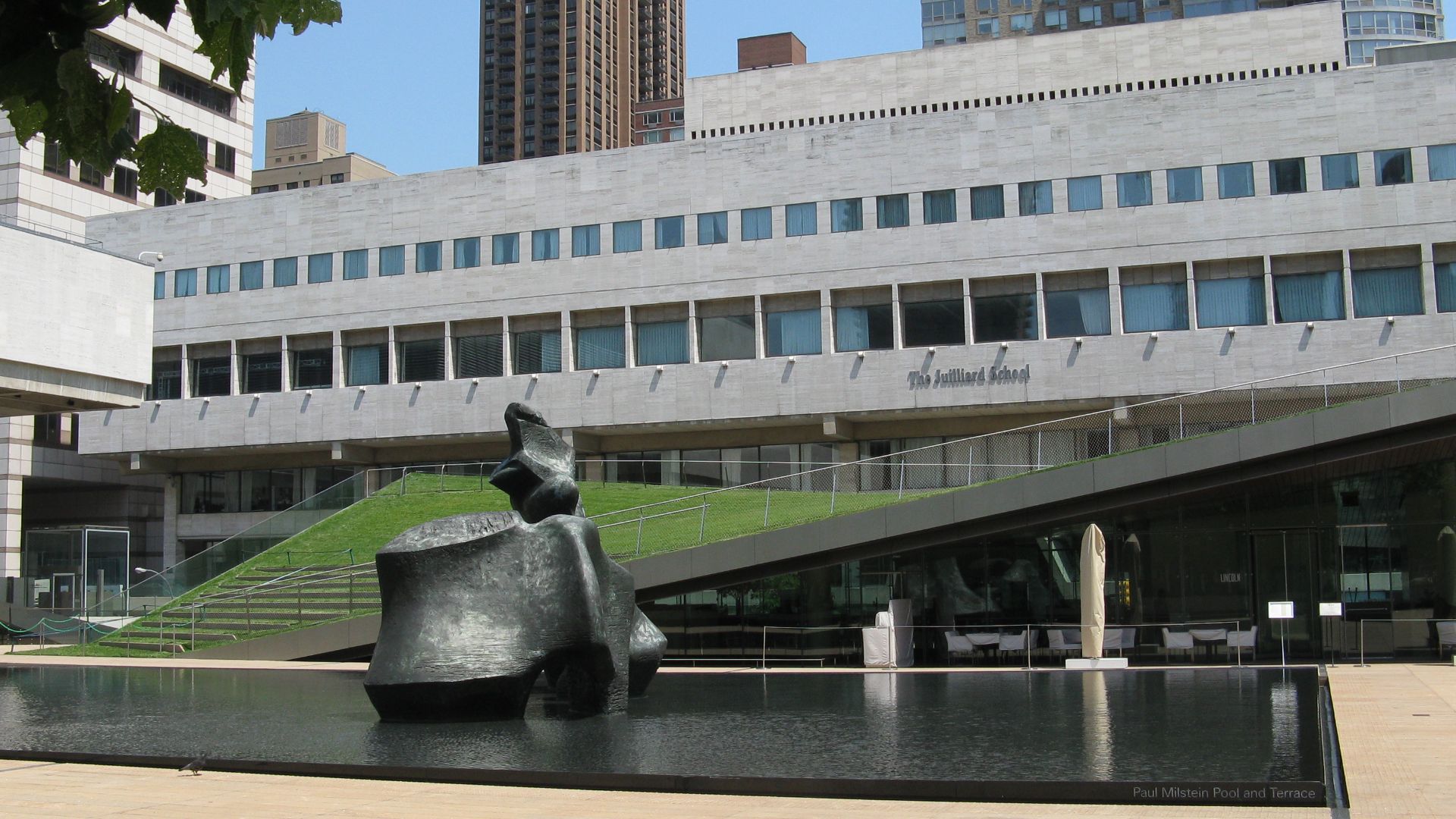 Yair Haklai, Wikimedia Commons
Yair Haklai, Wikimedia Commons
Reeve’s Friendship
At Juilliard, he formed a lifelong bond with fellow student Christopher Reeve. Reeve described his first impression of the energetic newcomer: “Robin wore tie-dyed shirts with tracksuit bottoms and talked nonstop like an untied balloon that had been inflated and immediately released," caroming off classroom walls.
Acting Training
Juilliard's conservative classical training methods clashed with this boy’s explosive energy and improvisational instincts. Voice teacher Edith Skinner was bewildered by his ability to instantly perform in multiple accents. Acting instructor Michael Kahn also criticized his antics as mere stand-up comedy rather than serious dramatic work.
 David Livingston, Getty Images
David Livingston, Getty Images
School Exit
After three years at this institute, Williams chose to leave during his junior year in 1976. John Houseman himself suggested the school had nothing more to teach him. Gerald Freedman called him a "genius" whose talents didn't fit the institution's rigid classical framework at all.
Comedy Beginnings
Robin started performing stand-up in San Francisco's Bay Area comedy scene in 1976. His first performance took place at the Holy City Zoo, where he began as a bartender and worked his way up to the stage. The city's counterculture movement matched his irreverent comedic style.
San Francisco
Well, the late 1970s San Francisco comedy renaissance accepted William’s manic energy and stream-of-consciousness style. He discovered “drugs and happiness” during this period, later reflecting that he witnessed “the best brains of my time turned to mud” in the town’s hedonistic atmosphere.
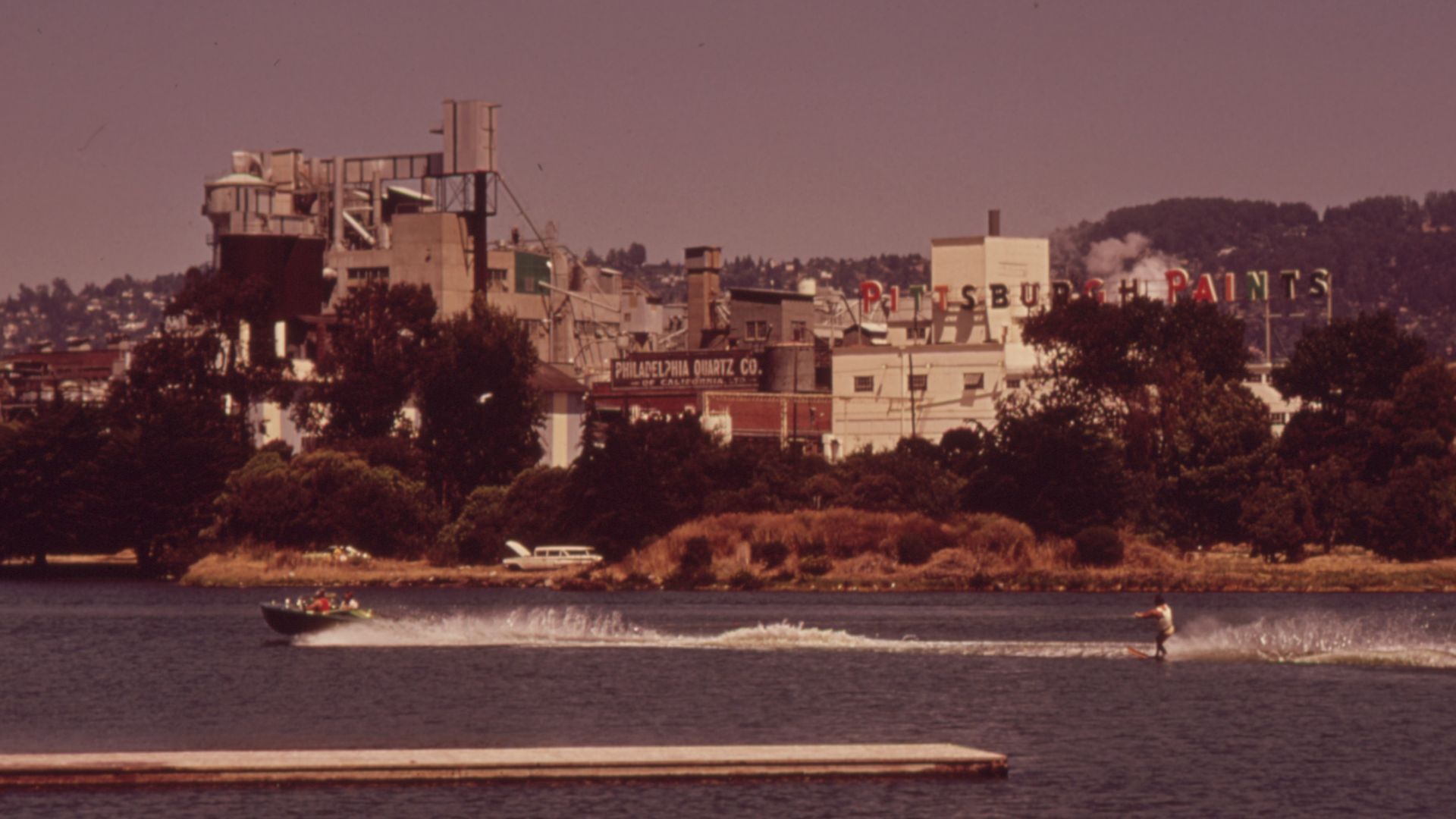 Rain, Belinda, Photographer (NARA record: 8464467), Wikimedia Commons
Rain, Belinda, Photographer (NARA record: 8464467), Wikimedia Commons
Club Performances
The lad soon moved to Los Angeles and continued developing his act at comedy clubs like The Comedy Store. In 1977, television producer George Schlatter spotted him performing and invited him to appear on a "Laugh-In" revival. Though the show failed, it opened essential doors for his career.
Television Break
David Letterman, already established in comedy, first saw Robin perform as a newcomer at this comedy club. He described the experience as “like a hurricane,” thinking to himself, “Here goes my chance in show business”. Williams’ explosive energy immediately set him apart from other comedians.
Mork Character
Garry Marshall eventually cast him as alien Mork in a 1978 "Happy Days" episode after the original actor departed. During his audition, the actor impressed producers by sitting on his head when asked to take a seat. His quirky humor secured the coveted role within days.
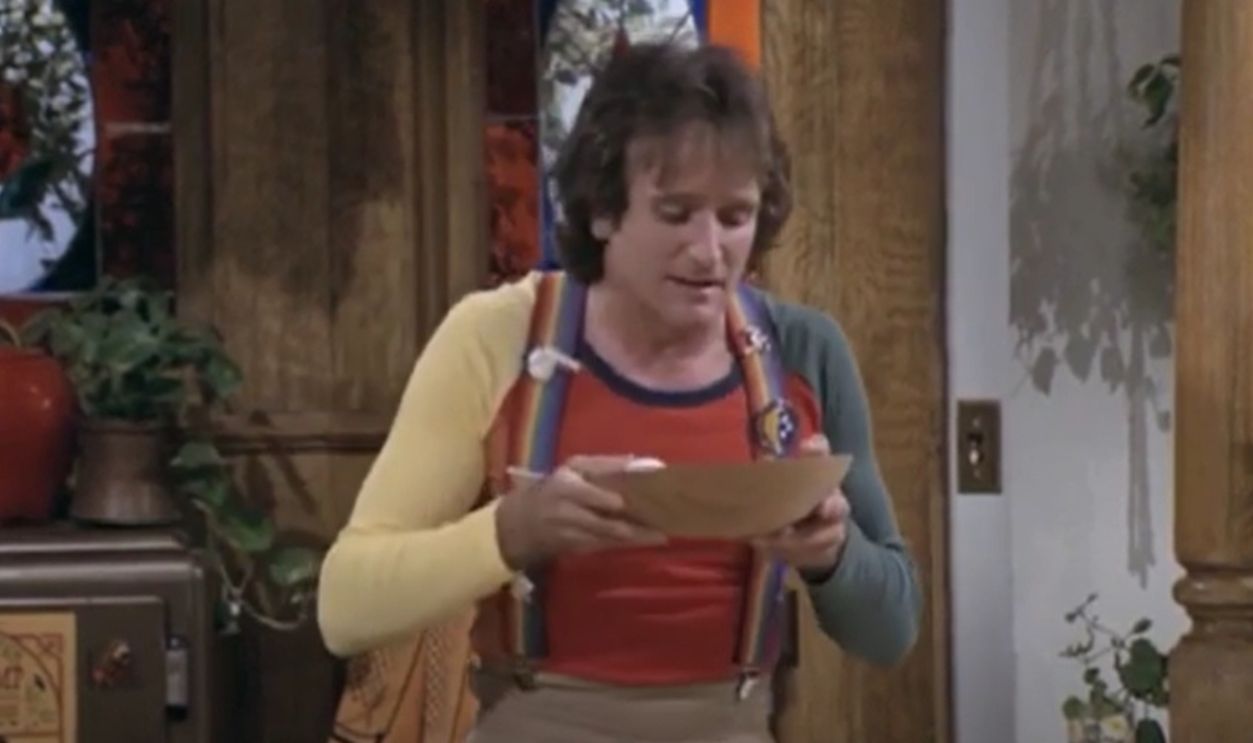 My friends, the eggs by Johannes Bockwoldt
My friends, the eggs by Johannes Bockwoldt
Show Success
Mork & Mindy became a cultural phenomenon, attracting sixty million weekly viewers at its peak. The show was specifically written to accommodate Robin's extreme improvisations in dialogue and physical comedy. His character spawned popular merchandise, including posters, coloring books, and lunch boxes.
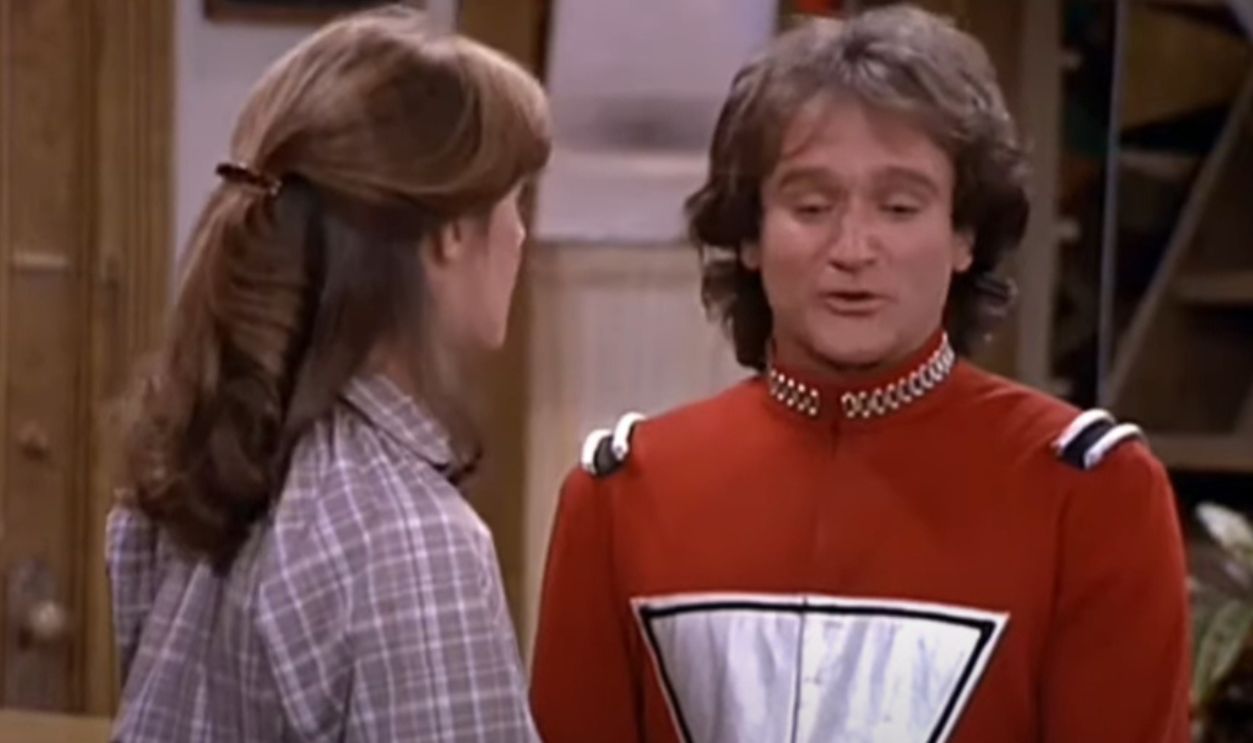 Mork & Mindy - Random scenes from Season 1 by Jola
Mork & Mindy - Random scenes from Season 1 by Jola
Magazine Fame
He graced the cover of Time magazine on March 12, 1979, cementing his status as a cultural icon. Michael Dressler's photograph showed both his comedic and thoughtful sides brilliantly. The image was later installed in the Smithsonian's National Portrait Gallery, allowing visitors to pay respects.
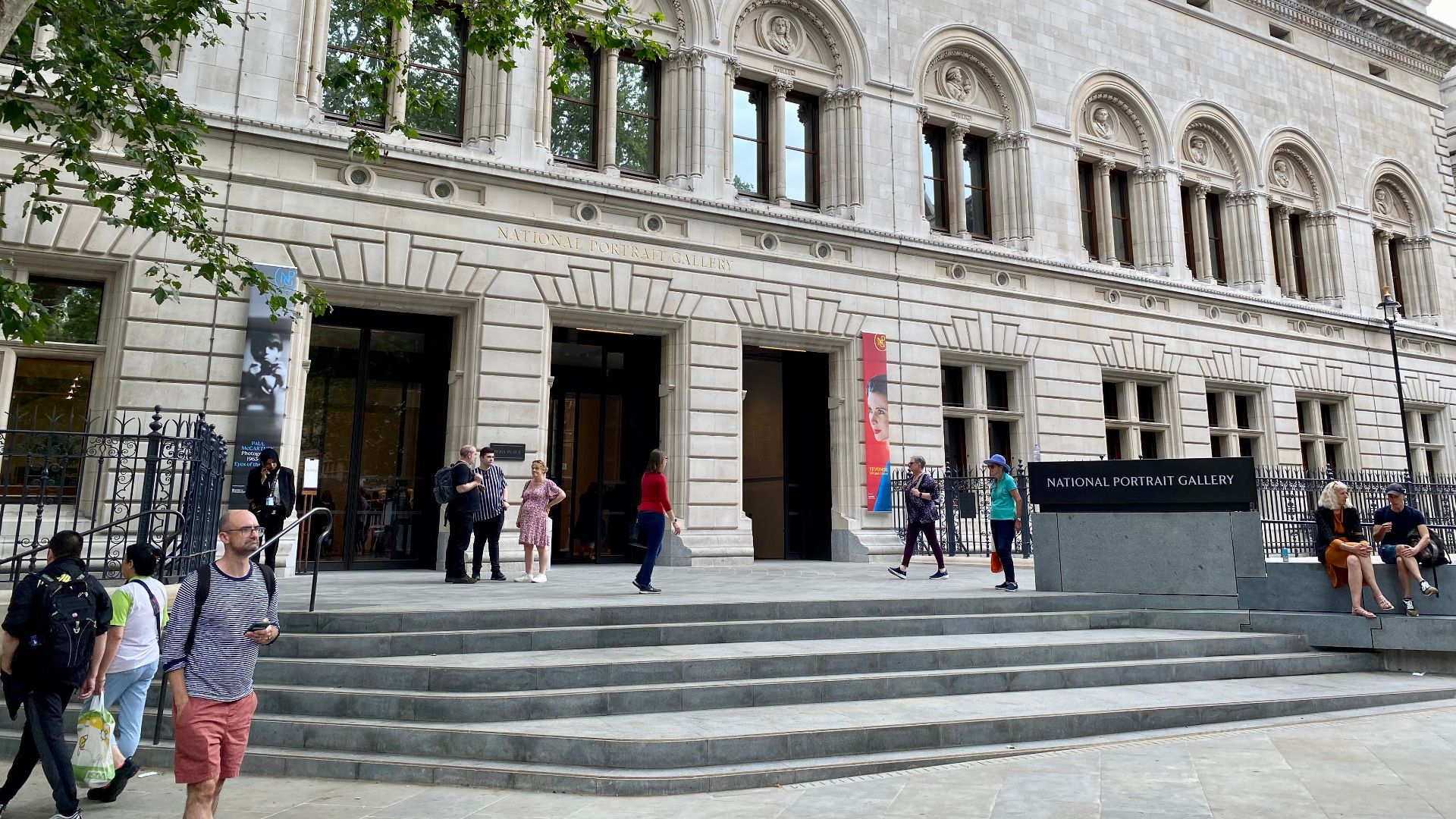 No Swan So Fine, Wikimedia Commons
No Swan So Fine, Wikimedia Commons
Film Debut
Apparently, Williams’ first credited film role came in the low-budget 1977 comedy Can I Do It...'Til I Need Glasses? However, his first starring performance was as the title character in Popeye (1980). Despite the commercial disappointment, critics didn't blame his performance for the lackluster box office results.
 Robin Williams 1st Movie Role in
Robin Williams 1st Movie Role in
Comedy Albums
His stand-up success ultimately expanded beyond television with his first comedy album, Reality...What a Concept in 1979. Recorded live at New York's Copacabana, the album brought him a Grammy Award for Best Comedy Album. This recording showcased his manic energy and his talent to home audiences nationwide.
 Robin Williams - Reality...What a Concept - Shakespeare (A Meltdowner's Nightmare) by Cyber Demon
Robin Williams - Reality...What a Concept - Shakespeare (A Meltdowner's Nightmare) by Cyber Demon
Good Morning, Vietnam
Well, Good Morning, Vietnam (1987) marked his breakthrough dramatic role as radio DJ Adrian Cronauer during the Vietnam War. Director Barry Levinson allowed him to improvise most of his dialogue without a script, while he created voice impressions of Walter Cronkite, Elvis Presley, and Richard Nixon.
 Good Morning, Vietnam (1987) - First Broadcast by Chuck Amuck
Good Morning, Vietnam (1987) - First Broadcast by Chuck Amuck
Oscar Nomination
His acting in this role earned Williams his first-ever Academy Award nomination for Best Actor. He balanced comedy with profound dramatic moments. Producer Mark Johnson even said they simply “let the cameras roll” as Robin “managed to create something new for every single take”.
 Good Morning Vietnam - Funny scene by Johnny's War Stories
Good Morning Vietnam - Funny scene by Johnny's War Stories
Dead Poets
Then, in 1989, the individual portrayed private school English teacher John Keating in Dead Poets Society. His inspiring work included the memorable final scene where students stand on desks saying, "O Captain! My Captain!" Critics noted that the excellent film inspired an entire generation.
 O Captain, my Captain! | Thank you to Robin Williams (HD) by Oliver Kahl
O Captain, my Captain! | Thank you to Robin Williams (HD) by Oliver Kahl
Aladdin’s Voice
Disney's Aladdin (1992) featured Robin as the Genie, a role written for him. Initially reluctant about Disney merchandising, he accepted with conditions, specifically excluding toy sales. He literally recorded thirty hours of material and impersonated dozens of celebrities, including Jack Nicholson and Groucho Marx.
 ALADDIN "Robin Williams" Featurette (1992) Disney by JoBlo Animated Videos
ALADDIN "Robin Williams" Featurette (1992) Disney by JoBlo Animated Videos
Disney Success
Aladdin became 1992's highest-grossing movie and earned Robin a Special Golden Globe Award for Vocal Work in a Motion Picture. His performance revolutionized animated movies by proving that major stars could enhance cartoon voice acting. It became one of his most beloved and recognizable characters ever.
 Robin Williams Wins Special Achievement Award - Golden Globes 1993 by Awards Show Network
Robin Williams Wins Special Achievement Award - Golden Globes 1993 by Awards Show Network
Film Stardom
Throughout the 1990s, this man starred in critically acclaimed dramas such as The Fisher King (1991) and Mrs Doubtfire (1993). Director Terry Gilliam praised his capacity to "go from manic to mad to tender and vulnerable," calling him the owner of “the most unique mind on the planet”.
 The Fisher King (1991) Trailer #1 | Movieclips Classic Trailers by Rotten Tomatoes Classic Trailers
The Fisher King (1991) Trailer #1 | Movieclips Classic Trailers by Rotten Tomatoes Classic Trailers
Good Will Hunting
Robin's character as therapist Sean Maguire in Good Will Hunting (1997) displayed his dramatic range alongside Matt Damon and Ben Affleck. His work deeply affected real therapists who praised its authenticity. The "It's not your fault" scene became emotionally iconic in cinema history.
Academy Award
Ultimately, he picked up the Academy Award for Best Supporting Actor for this very movie in 1998. This recognition was vital as it validated his dramatic acting abilities after years of being primarily known for comedy. The win represented the pinnacle of his film career.
 Robin Williams Wins Supporting Actor: 1998 Oscars by Oscars
Robin Williams Wins Supporting Actor: 1998 Oscars by Oscars
First Marriage
Robin married actress Valerie Velardi in 1978, two years after they met at a San Francisco tavern where he worked as a bartender. Their courtship began during his struggling comedian days, and Velardi provided important emotional support throughout his breakthrough with Mork & Mindy.
Son’s Birth
Zachary Pym Williams arrived in 1983. The experience of holding his newborn son provided a deep perspective on life's priorities beyond career ambitions. Zachary's birth coincided with his commitment to sobriety, as he wanted to be fully present for his child's upbringing.
Divorce
After ten years together, Robin and Valerie divorced in 1988 amid the pressures of Hollywood fame and personal struggles. While tabloids speculated about affairs with nanny Marsha Garces, Valerie later clarified that any new relationship began only after their marriage had already ended through natural separation.
Second Marriage
Then, on April 30, 1989, Robin wed Marsha Garces when she was six months pregnant with their first child. Zelda Rae was born in 1989, followed by their son Cody Alan in 1991. Apparently, Zelda's name honors Williams’ love for The Legend of Zelda video game franchise.
Life With Schnedier
Marsha Garces, unfortunately, filed for divorce in March 2008 after nineteen years of being together, citing irreconcilable differences. Post this, he found lasting love with graphic designer Susan Schneider, marrying her in 2011. They shared a beautiful Sea Cliff home overlooking San Francisco Bay.
 Gilbert Carrasquillo, Getty Images
Gilbert Carrasquillo, Getty Images
Cycling Hobby
Cycling became the actor’s passionate substitute for alcohol, helping maintain his sobriety through physical activity. He amassed an impressive bicycle collection and followed professional racing religiously. According to bike shop owner Tony Tom, Robin credited cycling with saving his life during his darkest periods of recovery.
Gaming Love
Williams was an avid enthusiast of pen-and-paper role-playing games and modern video games throughout his adult life, especially evident through Zelda. His extensive anime figure collection included characters from Appleseed and Ghost in the Shell, reflecting his deep appreciation for Japanese culture.
Charity Work
Comic Relief USA, co-founded with Whoopi Goldberg and Billy Crystal in 1986, raised over $80 million for homeless causes through annual HBO specials. Williams’ USO tours entertained 90,000 military personnel across thirteen countries. His philanthropy extended to veterans' causes and St Jude Children's Research Hospital initiatives.
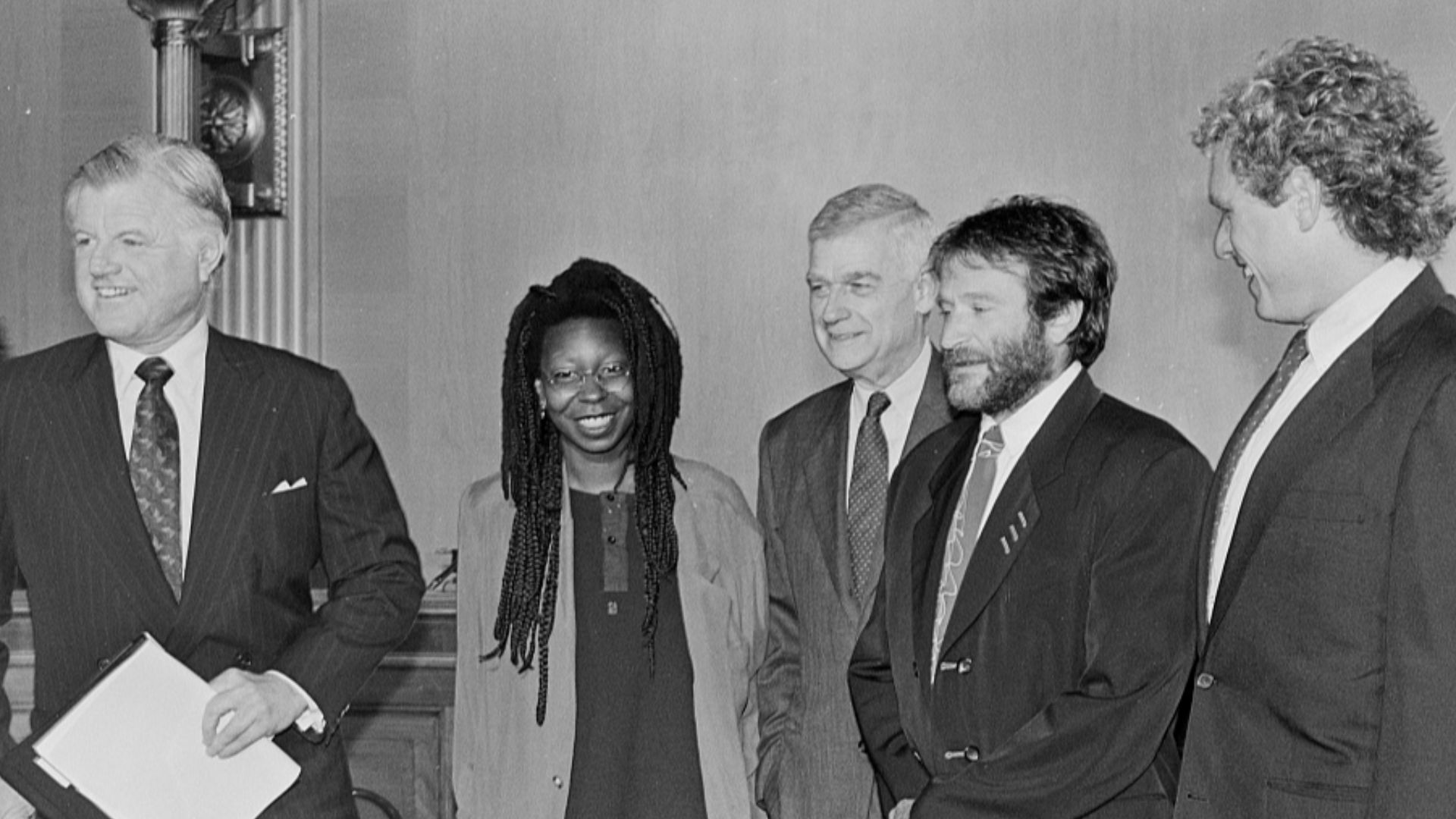 Laura Patterson, Wikimedia Commons
Laura Patterson, Wikimedia Commons
Health Decline
Sadly, in March 2009, the star was hospitalized for serious heart problems requiring immediate surgical intervention. Doctors performed aortic valve replacement, mitral valve repair, and corrected his irregular heartbeat at the Cleveland Clinic. The surgery forced him to postpone his planned comedy tour while recovering.
Final Struggle
Williams’ final years were marked by a devastating neurological condition initially misdiagnosed as Parkinson's disease. Schneider revealed he experienced sudden spikes in fear, stress, and insomnia beginning in October 2013. Memory loss, paranoia, and delusions progressively worsened, leaving him saying, “I just want to reboot my brain”.
Vivian's Diagnosis
In January 2014, 21-year-old Vivian Waller from Auckland, New Zealand, received devastating news about terminal cancer affecting her lungs, bowel, and liver. Facing her prognosis with courage, she created a heartfelt bucket list containing five meaningful wishes, including meeting her comedy idol Robin Williams.
Williams' Response
Upon learning about Vivian's wish, Williams created a deeply personal video message specifically for her family. He addressed Vivian, her husband Jack, and their daughter Sophie by name in the approximately 30-second clip. He offered encouragement and warmth during her highly challenging time.
 Bonnie Schiffman Photography, Getty Images
Bonnie Schiffman Photography, Getty Images
Timing Significance
The actor himself recorded this compassionate message just months before his own demise in August 2014, making his gesture even more poignant in retrospect. The video gained widespread recognition after his passing, highlighting his deep empathy and ability to bring hope to strangers.
Lasting Legacy
Well, the actor was found dead on August 11, 2014, at age 63 in his Paradise Cay home, with his death ruled suicide by hanging. An autopsy mentioned diffuse Lewy body dementia. However, his demise sparked global tributes celebrating Williams’ immeasurable contributions to comedy and entertainment.
 Frank Schulenburg, Wikimedia Commons
Frank Schulenburg, Wikimedia Commons


